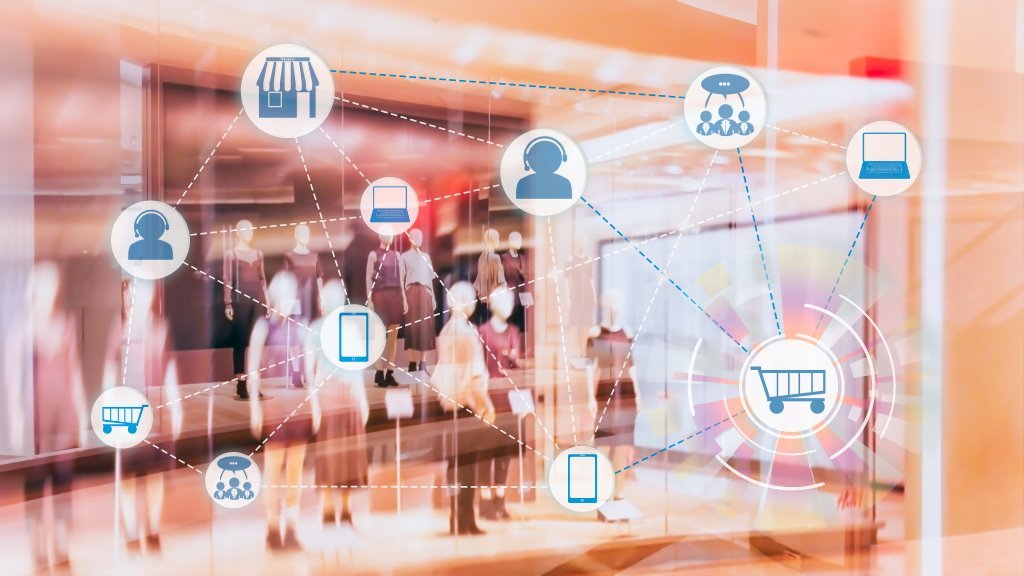Thought Leadership Article
The Cloud is Key to Digitalization of Retail
The pandemic has reminded retailers how important it is to have a scalable infrastructure. Many different SaaS solutions are available for linking digital and physical retail stores. Here are some insights from the US market.
Retailers are making fundamental changes to their business models in a quest for agility and innovation, to enhance their relationships with consumers. As in many other business sectors, the COVID-19 crisis has accelerated trends that were already under way.
Access to retail stores became impossible overnight. Call centers, e-commerce platforms and other ways of interacting remotely became the only points of contact with consumers for many months.
In these exceptional circumstances – which are unfortunately likely to be with us for some time – brands that had already started to make major changes to their business models are ahead of the curve.
Cloud technologies are now more important than ever as the digitalization of customer relations accelerates. Let's start with IaaS – infrastructure as a service. The scalability of its cloud infrastructure enables it to absorb activity peaks on an e-commerce site and, unlike an on-premise infrastructure, the retailer only pays for the resources used, while the provider is responsible for the maintenance and scalability of the platform.
Sales forecasting, chatbots and live streaming
SaaS (software as a service) solutions also provide innovations. Retail was one of the last sectors to make use of the vast amount of data at its disposal. Until recently, brands were still planning their sales using basic tools like Excel spreadsheets. Today, a tool like Anaplan can produce sales forecasts based on weather, seasonality or changing consumer behavior. Anaplan is just as easy to learn as Excel, making it accessible to supply chain, marketing and finance staff.
Other solutions can be used to analyze a customer's experience from beginning to end, providing helpful transparency when previously only the company’s CEO had a comprehensive overview of the business. The French solution ContentSquare, for example, can also be used to analyze a customer’s experience on an e-commerce site.
SaaS tools can also be used to link physical and digital retail stores. For example, a customer can use the reservation app Booxi to book an appointment in a store, based on the salespersons’ schedules, to buy or return a product or pick up a click-and-collect item. AI powered Chatbot, Heyday, can be used to interact with consumers online and on social media such as Instagram, Snapchat, or Facebook, etc. As a brand ambassador, it uses the same tone as a salesperson (serious, upbeat or humorous) to ensure communication is consistent and the brand’s identity is maintained.
Livescale is another example of this “phygital” strategy. On this platform brands can showcase their latest collections as a live stream. A customer can click on a dress during the fashion show, chat with the sales teams, and then purchase the item.
Finding the right balance between human and digital
All these digital interactions significantly increase conversion rates and the value of the average basket. However, they are not intended to replace human contact. A customer must be able to speak to a salesperson or book a slot in store at any time. It’s all about finding the right balance between digital and face-to-face sales so that the human aspect of the customer relationship is not lost.
AI can detect emotions and adjust its responses according to how the conversation develops. And if it reaches the limit of its abilities, it hands over to the in-store salesperson, who will use their smartphone to show the customer the required products. The salesperson therefore becomes an adviser and demonstrator.
Similarly, a real person can help an internet user on an e-commerce site to complete their purchase. Digital technology makes this kind of remote selling possible, where the salesperson and the customer are in different physical locations during the sales process.
I believe physical stores will re-emerge in the post-COVID world, but that their role will focus more on service and customer experience. A customer in a fitting room might interact with a smart mirror to ask for another size, which the salesperson will bring them, or check out items in a shopping basket that they started online at home. Flagship stores will provide these kinds of experience, while smaller stores will offer local services that differ from one neighborhood to another.
Establishing a single, coherent retail experience
More generally, store profitability should be reconsidered. It is not only about achieving sales. Showrooming creates customer loyalty and speeds up the buying act: a customer can buy an item online a few minutes after they have seen and touched it in store. E-commerce and retail stores need to work hand in hand. I envision not only a single pricing system but also a single management system, covering all the sales networks, whether they are virtual or physical.
Stores can only be connected to the rest of the retailer’s environment and achieve a coherent retail experience using the cloud. Silos must be a thing of the past, with all channels coming together to offer the right product, at the right time, with the right type of service. Regardless of the contact channel or delivery method, the customer should have access to all stock in all stores and warehouses.
The 2008 crisis in the United States led to the creation of cloud native retailers, combining the best of digital and face-to-face retail. Examples of this include Everlane, Warby Parker, Casper and Allbirds.
These brands – few of which have crossed the Atlantic – demonstrate that digital technology offers a great many opportunities for making use of data and, perhaps paradoxically, ensuring that the human aspect of customer relations is maintained. Finally, the watchword of retail should be agility. Like shopkeepers who regularly change their window displays to reflect the latest trends, digital solutions now enable them to monitor consumers’ expectations and change direction at any time.


